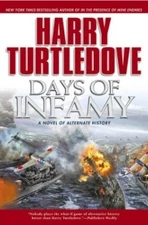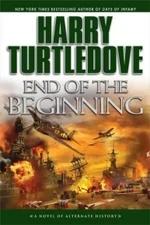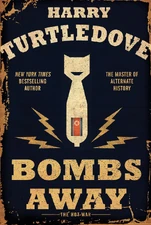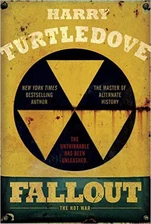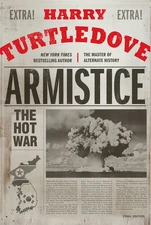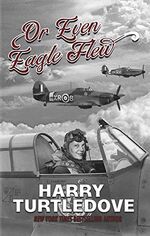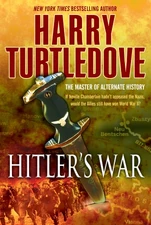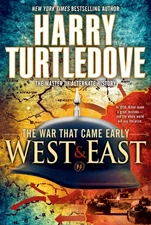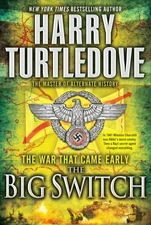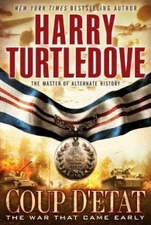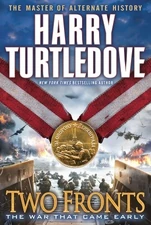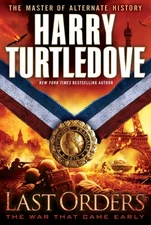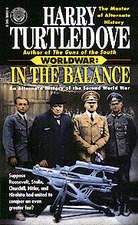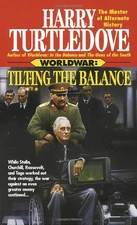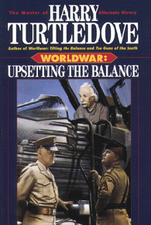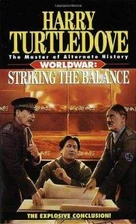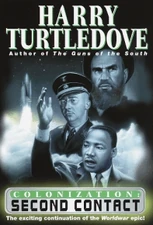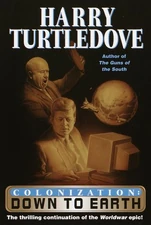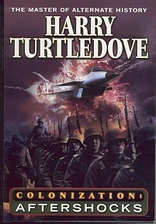
The Royal Air Force (RAF) is the air arm of the British Armed Forces. Formed on 1 April 1918 the RAF has taken a significant role in British military history ever since, playing a large part in World War II and in other conflicts.
Royal Air Force in Days of Infamy[]
The Royal Air Force had been greatly reduced in strength and number due to more pressing concerns in Europe; thus being completely unprepared for the Japanese attack. The British were pushed out of their Pacific empire, and all the way back to India, where they fought a rough battle with the Japanese Air Force for control of the skies over Ceylon.
By early 1943, with British fortunes turning for the better in Europe, more attention was turned to the Pacific and the Royal Air Force had retaken the offensive, bombing Rangoon and even Singapore.
Royal Air Force in The Hot War[]
The Royal Air Force was again called to defend the United Kingdom when World War III broke out in January 1951.
Royal Air Force in In the Presence of Mine Enemies[]
The Royal Air Force had been defeated by the Luftwaffe during the Battle of Britain in 1940. Fighters of the RAF hung on display in the Soldier's Hall in Berlin.[1]
Royal Air Force in Or Even Eagle Flew[]
At the outbreak of World War II, several non-British flyers made their way to the UK to volunteer for the Royal Air Force. Among these was American pilot and celebrity Amelia Earhart, who joined in 1940 in defiance of U.S. neutrality policy.[2]
After proving herself in combat, Earhart was able to use public opinion to convince the RAF to accept British women as combat pilots, including Amy Johnson.
Royal Air Force in Southern Victory[]
The British Royal Air Force debuted during the Great War in aerial combat across the Western and Canadian Fronts with models such as the Sopwith Camel and the Sopwith Pup. Throughout the war, the situation in the air swung back and forth until 1917 when the industrial might of the US began to out weight the Royal Air Force in Canada. Despite this, they remained undefeated when the armistice was signed.
After the war, the Royal Air Force was still a force to be reckoned with and under went rearmament, and even began researching new jet technologies after Winston Churchill came to power.
When the Second Great War began, the Royal Air Force initiated strategic bombing of German cities. Although their French allies helped, they were over shadowed by the British who were able to put more effort into it. However by 1943, the Royal Air Force had lost its air superiority over the Germans and was slowly forced back onto the defensive when the German Army liberated the Netherlands, and started bombing England from bases there. The RAF switched from attacking cities to bombing the airfields after the Germans reached Belgium in an attempt to stop them from bombing British cities.
After the destruction of Paris by a superbomb, the RAF was able to successfully drop their own bomb on Hamburg, but were unable to prevent the massive raid that disguised the German atomic attack on London, Norwich and Brighton. In their attempt to counterattack with their second bomb, the strength of the RAF was unable to penetrate the German air defence and the bomber carrying the weapon was shot down, forcing Britain to sue for an armistice.
Royal Air Force in The War That Came Early[]
Although still unprepared, the Royal Air Force was perhaps the only air force in Europe that was able to give the Luftwaffe a challenge in the skies during the German thrust through the Low Countries and into France in 1939. During this push, the RAF made bombing raids on German cities, promoting retaliation from the Germans. However, due to a Home Defence Network set up by the RAF, these raids proved useless. When the British made their counter attack outside Paris, the RAF was successful in CAS roles and air cover protection. After Paris had been saved, the RAF continued to contest the skies of Europe with the Luftwaffe. While the Luftwaffe still made raids on British soil in retaliation for British raids on German cities, the home defence network made these extremely costly.
After the 'Big Switch' in 1940, the RAF sent its European arm east to aid the BEF against the Soviet Air Force. While there, they managed to impress the Russians who'd been fighting the Germans, who considered them tougher than the Germans.
After the military coup of 1941, the RAF returned to England, and began bombing German cities once more. However, they avoided French air space in order to keep the French from bombing them. The French on the other hand, although still allied with the Germans, did not strike England, to the relief of the RAF.
Royal Air Force in Worldwar[]
The Royal Air Force was engaged in combat with elements of the German, Italian and Japanese air forces when the Race arrived at the end of May 1942. As the RAF was returning from Operation Millennium on Cologne, Race Killercraft devastated the RAF's bomber fleet, thus ending their war against the Axis Powers.
During the first three months of the invasion, the RAF attempted to attack Race landing zones using traditional bomber tactics, but the Race's anti-air defense proved so formidable, that the casualties suffered forced the RAF to switch tactics, and eventually cease strategic bombing altogether. Protection of the British Isles was made harder as the Race destroyed the RAF's radar network, forcing them to rely on coast watchers to report incoming attacks. With their fleet of Spitfires and Hurricanes, the RAF chose to engage Killercrafts after they'd attacked their targets as they had already expended their missiles, while Barrage Balloons also proved an unexpected anti-air weapon.
While primarily on the defensive, the RAF was able to utilize its bomber fleet. Lancaster’s were fitted out with portable radar sets and used to guide fighters such as Mosquito’s onto their targets. It was during these days that the RAF also threw it's own prototype jet fighter, the Pioneer and later, the Meteor, into action alarming members of the Conquest Fleet's High Command with its sudden appearance.
As 1942 passed into 1943, the RAF was increasingly becoming a troublesome enemy for the Race in Northern France. When the decision was made to invade the UK later that year, the RAF struck back with everything it had. Since the invasion, they had hoarded aircraft of all types; it was able to harass the Race in their attempts to transport material and troops across the channel, hampering the Race's logistics. When the decision was made to abandon the conquest of the United Kingdom, the RAF began using remote-controlled dummy planes to trick Killercraft's into expending their precious missiles, thus allowing fighter’s to engage them in combat. This tactic was successful until the Race uncovered it.
The RAF continued to harass the Race in both Northern France and England, until a peace settlement was reached in mid 1944. During the fighting, the RAF was considered the toughest of all the air forces on Tosev 3 by Race pilots.
References[]
- ↑ In the Presence of Mine Enemies, pg. 4, HC.
- ↑ Or Even Eagle Flew, see, e.g., pgs 1-35, loc. 48-428, ebook.
| |||||||||||||||||
| |||||||||||||||||||||
| ||||||||||||||||
| |||||||
| ||||||||||||||||||||||
| |||||||||||||||||||||||||
